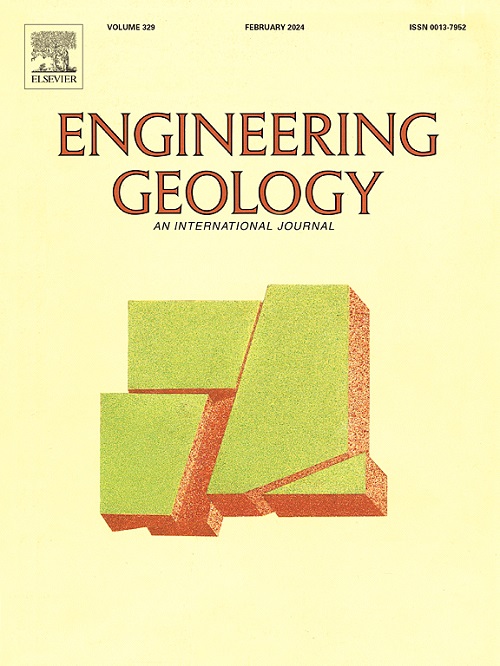Analysis on the failure mechanism and entire evolution process of toppling bank slope under heavy rainfall utilizing material point method
IF 6.9
1区 工程技术
Q1 ENGINEERING, GEOLOGICAL
引用次数: 0
Abstract
The Yalong River hydropower base is located on the eastern margin of Tibet Plateau, where the toppling slopes are widely distributed. The toppling slopes are susceptible to sliding during rainfall, posing a significant safety risk to hydroelectric generating. Examining the kinematic properties and disaster effects of potential landslides is crucial for assessing risks and the safety management of reservoirs, as well as understanding the failure mechanism of toppling slopes. Tiangeng slope is a toppling bank slope situated in the middle reaches of Yalong River, and its deformation mode is representative of the region. To facilitate disaster mitigation and early warning in reservoir area, the Tiangeng slope is analyzed by the integration of field monitoring and material points method (MPM). Additionally, the MPM results are compared with the finite element method (FEM), thereby confirming the reliability of MPM. The essential information such as slope deformation trend and potential sliding surface are obtained by field monitoring, which provides a basis for establishing the numerical model. The MPM is an efficient numerical technique for examining geotechnical nonlinear large deformation issues. The MPM is utilized to investigate the entire evolution process of slope failure under rainfall, emphasizing the post-landslide stage. The results show that the slope exhibits typical toppling-slip deformation, with the principal failure characteristic being creep-tension cracking. The potential slope failure exhibits retrogression and traction characteristics, comprising four distinct stages and a maximum runout distance of 202.9 m.求助全文
约1分钟内获得全文
求助全文
来源期刊

Engineering Geology
地学-地球科学综合
CiteScore
13.70
自引率
12.20%
发文量
327
审稿时长
5.6 months
期刊介绍:
Engineering Geology, an international interdisciplinary journal, serves as a bridge between earth sciences and engineering, focusing on geological and geotechnical engineering. It welcomes studies with relevance to engineering, environmental concerns, and safety, catering to engineering geologists with backgrounds in geology or civil/mining engineering. Topics include applied geomorphology, structural geology, geophysics, geochemistry, environmental geology, hydrogeology, land use planning, natural hazards, remote sensing, soil and rock mechanics, and applied geotechnical engineering. The journal provides a platform for research at the intersection of geology and engineering disciplines.
 求助内容:
求助内容: 应助结果提醒方式:
应助结果提醒方式:


